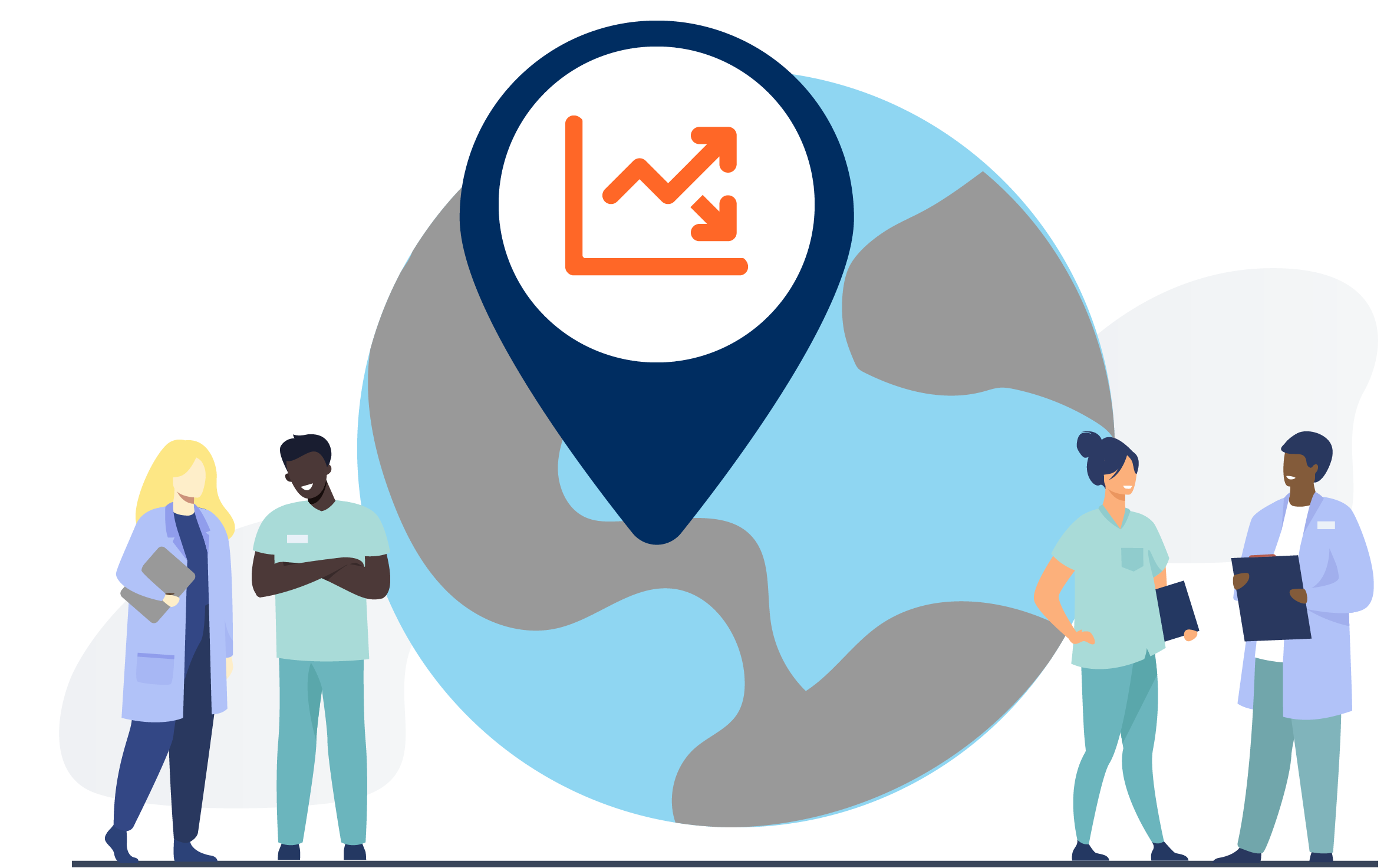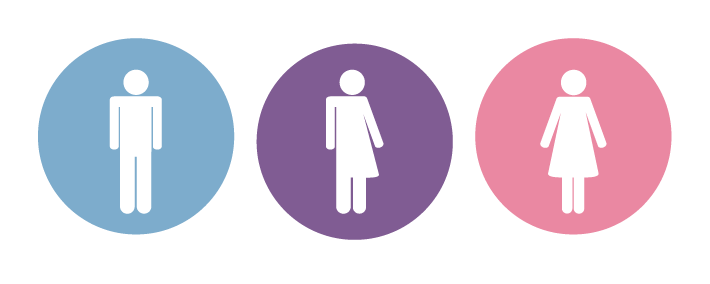What is the Difference Between Sex and Gender?
Sex is the classification of people as male or female. At birth, infants are assigned a sex based on a combination of bodily characteristics including: chromosomes, hormones, internal reproductive organs, and genitalia.
For example: Parents, family, and friends are often eager to learn the sex of a baby.
Gender is a culturally-defined set of economic, social, and political roles, responsibilities, rights, entitlements and obligations, associated with being female and male, as well as the power relations between and among women and men, boys and girls.
The definition and expectations of what it means to be a woman or girl and a man or boy, and sanctions for not adhering to those expectations, vary across cultures and over time, and often intersect with other factors such as race, class, age and sexual orientation.
Transgender individuals, whether they identify as men or women, are subject to the same set of expectations and sanctions.
Source
USAID, 2013.
Gender Identity and Sexual Orientation
Not everyone identifies with and behaves according to dominant gender norms. Because gender norms in many cultures are based on expectations that women and men are heterosexual, it is important to understand some key terms related to gender identity and sexual orientation.
Sexual and reproductive health professionals need to understand the relationship between gender and SRH to more effectively improve health outcomes. Health professionals should recognize that sexual and gender minorities—gay, men who have sex with men, lesbian, bisexual, and transgender people—may be at higher risk for gender-based violence and reproductive and sexual health problems because of their marginalization in most societies.
Source
Adapted from IGWG, 2013.
Gender-Based Violence
Gender-based violence (GBV) is an umbrella term for any harmful threat or act directed at an individual or group based on actual or perceived biological sex, gender identity and/or expression, sexual orientation, and/or lack of adherence to socially constructed norms around masculinities and femininities.
It is rooted in structural gender inequalities, patriarchy, and power imbalances.
GBV is typically characterized by the use or threat of physical, psychological, sexual, economic, legal, political, social and other forms of control and abuse. GBV impacts individuals across the life course and has direct and indirect costs to families, communities, economies, global public health, and development.
GBV is a global problem: It occurs in every country and society. It happens in public and private settings, including but not limited to digital and online spaces, educational settings, the home, and workplaces.
- Who is affected by GBV?
- Specific types of GBV
- Other types of violence
Women and girls across the life course experience high rates of GBV and are disproportionately affected by GBV. It is also experienced by individuals across the spectrum of gender identities and gender expression, including certain, already vulnerable populations, as well as boys and men.
Specific types of GBV include (but are not limited to):
-
- Child, early and forced marriage, female genital mutilation/cutting, so-called “honor”-based violence and killings, and other harmful practices
- Dating violence
- Domestic violence
- Female infanticide
- Femicide
- Human trafficking for sex and labor purposes
- Intimate partner violence
- Sexual harassment
- Stalking
- Sexual violence, including reproductive and sexual coercion, and rape, including marital rape, homophobic and transphobic rape, and rape as a tactic of conflict
Other types of violence that are sometimes gender-based include, but are not limited to:
-
- abandonment
- neglect
- bullying
- child abuse
- corporal punishment
- elder abuse
Why Does Gender Matter?
The following are key areas and examples of some ways gender impacts sexual and reproductive health:
Health policies sometimes discriminate against women and sexual/gender minorities by limiting their ability to freely access and choose appropriate sexual and reproductive health services and products. Policies to prevent and respond to GBV are frequently absent, limited, or ineffective.
Beliefs that men should be aggressive and have many sexual partners lead them to engage in behaviors that place them and their partners at risk of HIV and other SRH problems. Women’s lower status in society often means that their health care needs are not prioritized in the household or in the health system. The common practice of gender-based violence (GBV) puts women, girls, and sexual minorities at greater risk of SRH problems, including HIV and STIs.
Women generally have less power than men at all levels of society from the household to national and global leadership. Gender norms—such as limited mobility outside the home or greater childcare responsibilities—may limit women’s and girls’ ability to participate in the design and implementation of health programs in their communities.
Women generally have less access to education, formal employment, finances, and social capital, all of which limit their access to health information, services, and products.
Power cuts across and lays the groundwork for all domains. Women’s and girls’ overall lower status in society limits their self-determination, or ability to make decisions about their own bodies and to exercise influence within their households, communities and states about health issues and practices. The practice of child marriage in some countries limits girls’ ability to decide when to marry and bear children, and is harmful to their health and to the health of their children.
Context Matters
Gender is affected by specific contextual factors, which may affect imbalances of power and dominance between women and men.
Some of the factors that may influence gender include:
- Class, race, ethnicity, and sexual identity
- Faith, other ethics-based principles
- Urban versus rural: Different economies, resources, challenges, etc.
It is important for health program designers to also assess gender norms at different levels of observation. For example, they should examine the impact gender norms may have at the individual, household, community, and institutional levels.
It is also important to note that gender norms can vary among individuals and across cultures.
Gender Equity and Gender Equality
In order to address gender issues in the context of SRH programs, program designers should use gender equity approaches in order to advance gender equality.
Gender equity strategies are used to eventually gain equality.
Gender equity is achieved through gender integration and gender mainstreaming.
equality is the result.
Did you know?
Gender equitable program strategies can lead to greater gender equality.
Source
Adapted from USAID, 2013, and IGWG, 2013.
Gender Integration and Gender Mainstreaming
To advance gender equality and improve health outcomes, health program designers use gender integration and gender mainstreaming.
Gender Integration involves strategies applied in programmatic design, implementation, monitoring, and evaluation to take gender considerations into account and to compensate for gender-based inequalities.
Gender Mainstreaming is the process of incorporating a gender perspective into organizational policies, strategies, and administrative functions, as well as into the institutional culture of an organization. This process at the organizational level ideally results in meaningful gender integration.

Source
IGWG, 2013.
Integrating Gender to Impact SRH
Mounting evidence shows that integrating gender into health programs improves results. In 2004, 2008, and 2010, the USAID Interagency Gender Working Group (IGWG) reviewed dozens of projects that included a gender intervention and measured and evaluated RH outcomes. The two reviews found strong evidence that integrating gender into SRH programs has a positive impact on SRH outcomes, including:
- Greater family planning use
- Lower fertility
- Fewer adolescent pregnancies
- Greater contraceptive use
- Greater knowledge of HIV/AIDS prevention
- Greater condom use
- Lower STIs
- Greater knowledge of STI symptoms
- More clinic visits
- Improved client-provide interaction
Similar reviews have been carried out looking at HIV/AIDS interventions and the engagement of men and boys in changing gender-based inequity in health.
ideas in action
The success of the programs included in the IGWG reviews can only be partially attributed to gender integration. These programs included other effective strategies and best practices for accomplishing their objectives.
International Accords and Commitments
The 1994 International Conference on Population and Development (ICPD) in Cairo marked a shift to a more holistic health-based framework in reproductive health and development. This framework links gender equity, human rights, and health.
The conference advocated for:
-
- A comprehensive agenda to improve the rights of women and to provide them with access to SRH services
- Engaging men to improve health by promoting gender equality and a human rights-based approach to health
Before this conference, the international community had not explicitly acknowledged the inequitable power imbalances between men and women that affect individuals’ health decisions and behaviors. Over 180 governments around the world signed a Plan of Action attesting to the global commitment to implementing this agenda.
Subsequent international conferences, including the ICPD plus 15, reaffirmed the commitment to these issues. Most recently, the Commission on the Status of Women (CSW) adopted conclusions on the elimination and prevention of all forms of violence against women and girls in their March 2016 session.
- More information on milestone conferences
More information on milestone conferences and meetings is available here:
Source
Cohen and Berger, 2000; UN, 2013.
The Sustainable Development Goals
The Rio+20 conference (the United Nations Conference on Sustainable Development) in Rio de Janeiro galvanized a process to develop a new set of Sustainable DevelopmentGoals (SDGs), which carry on the momentum generated by the Millennium Development Goals and fit into a broader global development framework beyond 2015.
All 193 member states of the United Nations adopted the SDGs. They are intended to be achieved by 2030. The importance of gender is woven throughout all of the goals given the overarching objective to eradicate poverty and promote sustainable patterns of consumption and production. The SDGs put those who are most vulnerable and disadvantaged at the center of the development agenda.
Providing women and girls with equal access to education, health care, decent work, and representation in political and economic decision-making processes underpins Goal 5: Achieve gender equality and empower all women and girls.
Goal 5 and Goal 3: Ensure healthy lives and promote well-being for all at all ages are the most relevant SDGs to this course. For the full list of targets, see the Sustainable Development Knowledge Platform.
Source
UN, 2016.
USAID and Gender
Gender equality is a growing priority across USAID’s portfolio of development and health activities, reflected in an increasing number of official policies that require attention to gender in USAID projects.
Perhaps most notably, in March 2012 USAID released the “Gender Equality and Female Empowerment Policy” to guide the work of the Agency and its implementing partners in integrating gender at all steps of the development process. The policy stipulates that USAID will strive toward three over-arching outcomes:
- Reduce gender disparities in access to, control over, and benefit from resources, wealth, opportunities, and services—economic, social, political, and cultural.
- Reduce gender-based violence and mitigate its harmful effects on individuals and communities.
- Increase capability of women and girls to realize their rights, determine their life outcomes, and influence decision-making in households, communities, and societies.
- Additional documents
The following are additional documents that provide policy support and guidance for addressing gender in USAID projects in multiple development sectors:
-
- US Global Strategy to Empower Adolescent Girls
- PEPFAR Updated Gender Strategy
- LGBT Vision for Action: Promoting and Supporting the Inclusion of Lesbian, Gay, Bisexual, and Transgender Individuals
- US National Action Plan on Women, Peace, and Security
- US Implementation Plan for the US National Action Plan on Women, Peace, and Security
- Counter Trafficking in Persons Policy
- US Strategy to Prevent and Respond to Gender-Based Violence Globally
- 2016 Update
- Ending Child Marriage & Meeting the Needs of Married Children: The USAID Vision for Action
- USAID Youth in Development Policy: Realizing the Demographic Opportunity
- US National Action Plan for Children in Adversity
These materials were adapted from the Global Health eLearning Center, U.S. Agency for International Development.



